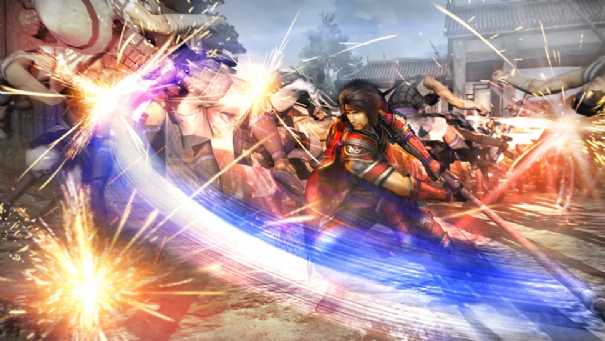Sanada’s story
As you can easily guess from the title, this chapter of the series will describe the famous story of Japan’s conquest from the standpoint of Yukimura Sanada, one of the most popular and popular characters in Japan, and even earlier that of his father , Masayuki Sanada, telling the battles they fought.
One of the criticisms that was often made to this end was the fact that characters and their surroundings and battles were little known and even of little interest to most people who do not live in Japan:It is clear that with this title the Omega Force has sought in all ways to involve the public in these tales, through the abundant use of cutscenes, various pre-battle dialogues and narratives, and even a surprisingly rich “encyclopaedia” which explains in a few words characters, scenarios and battles of that period.
Unfortunately, we must note that everything has been translated into English only, so this attention may not be well appreciated without a good understanding of Anglo-Saxon idiom
Coins and strokes
Gameplay, on the other hand, is largely identical to the previous titles of the series and, as usual, is easy to understand and uncomplicated to implement; if we wanted to find something particularly worthy of note we should refer to the presence of the “six coins”, the symbol of the Sanada family.
By collecting information before venturing into battle or completing various assignments and goals, we can increase this particular currency up to a maximum of 6 units. While we are engaged in battle, we may have the chance to invest in it to benefit from a special bonus during the fighting.
The effects may be different, for example, new officers may come to give us a strong hold on the collision ground, or we may be able to restore a unit to be protected to health, and so on. A clear attempt to make the gameplay more dynamic, although of course it is something that does not rewrite the structure of a genre that is overly consolidated.
One man army
In most of the major missions, as already mentioned, we can only use Masayuki and Yukimura, including their variants, both young and old, depending on the continuation of history, while other characters may only be used as secondary in some levels or they will have to be unlocked so that they can be used freely in any mode, but always out of the main story. Exceptions are the secondary battles that could bring clashes at the same time as those faced by the Sanada family, so they can offer the alternative perspective of some other character.
On these aspects is the main problem of the game, which we could generally bring to all the epigones of this genre: despite the obvious efforts of the developers to add special novelties and variations welcome out of the battles, such as the ability to turn inside the village / castle with its stores, upgrades and mini-games, as well as the ability to explore new areas in search of materials, can not miss the player’s inevitable background repetition.
We also note that there is no editor mode to create his own official, but present in the previous titles; a choice that is definitely due to a greater emphasis on the main plot and control of Sanada, but which will probably not appeal to some players. Also questionable is the progress of the characters, which will require us to go to the dojo every time to enhance every single aspect of the game, always using the appropriate coins. Technically, the gaming engine is the same as ever, so do not expect any changes in the impact of the chart on the horizon.

